Beth Kephart's Blog, page 47
June 12, 2015
LOVE and the Papal Visit to Philadelphia (World Meeting of Families)

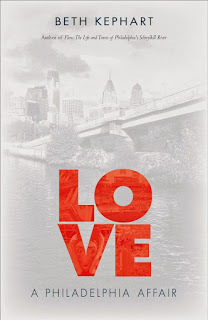 The Pope is coming to our city. LOVE is his vision, his banner, his mission. His grace and his grace notes.
The Pope is coming to our city. LOVE is his vision, his banner, his mission. His grace and his grace notes.Love: A Philadelphia Affair is due out in September, in time for this historic visit.




Published on June 12, 2015 03:16
June 11, 2015
in which one of My Spectaculars asks for honesty when speaking of mental health, David Marchino in The Daily Pennsylvanian
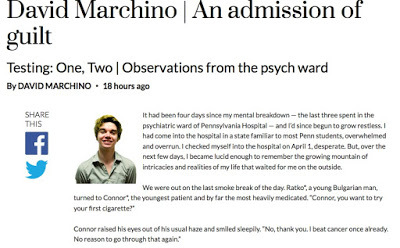 You know how I feel about my students. You know what love I had this past spring for My Spectaculars. Every. Single. Oneofthem. This young man—this David—was integral to us, remains integral to us, speaks truth, speaks it gently, and has something to say about mental wellness in this issue of The Daily Pennsylvanian.
You know how I feel about my students. You know what love I had this past spring for My Spectaculars. Every. Single. Oneofthem. This young man—this David—was integral to us, remains integral to us, speaks truth, speaks it gently, and has something to say about mental wellness in this issue of The Daily Pennsylvanian.David went missing for a class last spring. My students rallied to locate him. And while they did, I was having a conversation with myself and with those I trust about what universities can do for students who need time away from pressure. David articulates so masterfully here what students might do for one another. He is asking for a culture of mutual caring, of values that transcend the GPA, of a turn toward soul. I commend this. I believe that when you step onto a college campus you are making a commitment to loving watchfulness. Watch out for your friends. Watch out for your students. And may these harried students be given time—be given the resources—to take care of themselves.
David is about to set off for his first trip overseas. His first airplane ride. His first of many things. He's promised to update me on all he sees, but before he goes, please read his words. Here.
David, Godspeed and God bless.




Published on June 11, 2015 15:08
be who you are (avoid mediocrity)
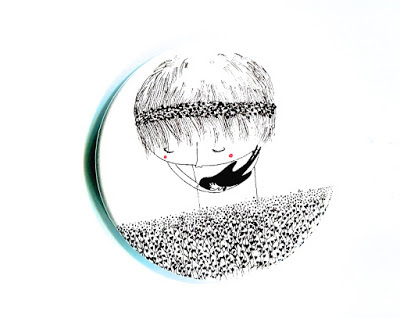 On a rainy Saturday morning in Krakow, we found the artists. I found her.
On a rainy Saturday morning in Krakow, we found the artists. I found her.I recognized her in an instant—this big-hoping, bird-cradling, barely-standing creature in a field of poppies. She ponders. She wishes. She is, for now, alone. It's an image that contains every claim you might make against my writing. And every claim you might make for it.
We have, as writers, the voices we were born with. We cannot authentically become someone else's idea of who we should be, of what the market might bear, and besides, this purported market shifts and tumbles, misdirects, is responsible for far more mediocrity than excellence.
Be who you are.




Published on June 11, 2015 04:33
June 10, 2015
World War II and the Fallen: an extraordinary new documentary by Neil Halloran
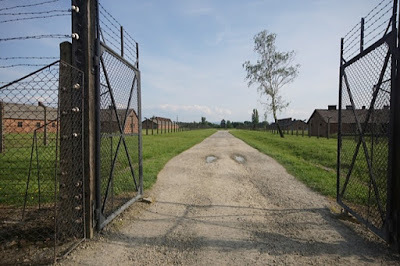 Early in our trip to Krakow we found ourselves seated beside an Irish couple at a restaurant. They'd returned that day from Auschwitz and Birkenau. They were insisting that we travel there as well. I was conflicted.
Early in our trip to Krakow we found ourselves seated beside an Irish couple at a restaurant. They'd returned that day from Auschwitz and Birkenau. They were insisting that we travel there as well. I was conflicted.Tell me why I have to go, I said, after expressing concerns about presenting myself as a tourist in a place where so much horror happened.
You go for the sheer immensity, the husband told me. You go because you have to.
And so we did—taking a two-hour bus ride from Krakow through the countryside and toward the camps. We arrived at the end of a day, most tourists gone. And then: The sheer immensity of it. 1.3 million interned. Only 200,000 survived. The shoes. The hair. The suitcases. The faces. The camp land that went on beyond possible seeing. The sheer immensity.
In the midst of our travels we received word from a visionary documentary filmmaker—Neil Halloran—about the release of a new project long in the making that puts some of this into context. Yesterday my husband and I sat with these eighteen or so minutes in perfect silence, watching. This is extraordinary material—World War II quantified and then contextualized. A reminder about the hope that still exists, even in this torn-up world of ours. And a spectacular use of numbers. In fact, I've never seen numbers used to such tremendous storytelling effect.
Here are Neil's words about the film itself. I highly recommend it as visual art and historical message:
Today I am launching the website fallen.io <http://fallen.io> after many years in the making, and I would be so very delighted if you gave it a look.
http://www.fallen.io
The Fallen of World War II is a short animated data-driven documentary about war and peace. The film explores the harrowing statistics of World War II and sizes up its numbers to other wars in history, including recent conflicts. It's a dark portrayal of the war, but hang in there, because it's also very much a film about peace.
The documentary is unusual in the way it blends data visualization with filmmaking. It was created almost entirely with custom software so that the visuals could be closely choreographed with the underlying data. The sound design and original score were composed by my brilliant collaborator Andy Dollerson - so wear headphones! As a web-based film, it features interactive segments that allow viewers to pause and dig into the data visualizations that are rendered live on screen.




Published on June 10, 2015 04:19
June 9, 2015
invitation of a lifetime. all love to Little Flower.
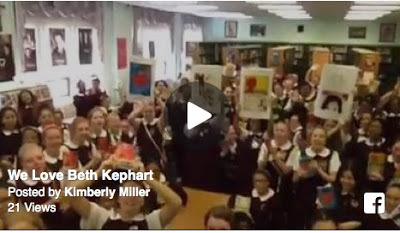 (view video by clicking on this link)
(view video by clicking on this link)A few years ago I met a sister named Kim. She loves books and she loves the girls who love her at Little Flower Catholic High School for Girls. She loves the girls, and so she gives them books to read. She loves the girls, and so she introduces them to authors. She loves the girls, and so she builds entire book festivals on their behalf.
She loves, and she keeps doing. They come and they go from her rousing library (and classrooms).
Enter her school. Walk her halls. Meet her girls, and you can't help but love them back.
This morning I am overwhelmed by this invitation to keynote the 2016 Little Flower Teen Writers and Readers Festival. Overwhelmed to be considered, for one thing. Overwhelmed to be invited in this way. What effort, what time, what forethought went into all of this.
And how it will never be forgotten.
This is love. This is a video of a lifetime.




Published on June 09, 2015 03:55
June 8, 2015
The Moravian Conference and One Thing Stolen News
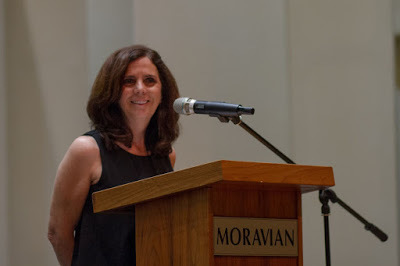
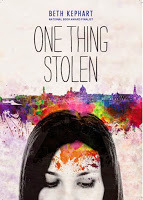 There was this thing that happened in Moravian Bethlehem this weekend. This clutch of days, of hours spent among writers and friends in a town I quickly came to love. Joyce Hinnefeld—chair of the Moravian College English Department and creator of the Moravian Writers' Conference—you made something special happen, something rare. You dignified writing and writers by the program you assembled and the writers and editors you attracted. You—miraculously—gave me the opportunity to write and deliver a keynote about a topic that I think matters, and then to spend time with my friend A.S. King in dialogue: I will never be able to thank you. Josh Berk, for time with your beautiful family at the library you run so well, I thank you, too.
There was this thing that happened in Moravian Bethlehem this weekend. This clutch of days, of hours spent among writers and friends in a town I quickly came to love. Joyce Hinnefeld—chair of the Moravian College English Department and creator of the Moravian Writers' Conference—you made something special happen, something rare. You dignified writing and writers by the program you assembled and the writers and editors you attracted. You—miraculously—gave me the opportunity to write and deliver a keynote about a topic that I think matters, and then to spend time with my friend A.S. King in dialogue: I will never be able to thank you. Josh Berk, for time with your beautiful family at the library you run so well, I thank you, too.I returned to my little house that is my home to much work. The day was intercepted by utterly unexpected news. First, a review for One Thing Stolen in Horn Book Magazine, a publication I love very much, calling this book of mine a "unique, moving story." Thank you. Then, moments later, news that the book has been named a Parents' Choice Gold Award selection.
It is always hard not to be able to directly thank people who have been kind to me. Horn Book and Parents' Choice: I hope you find these words. Joyce and Josh, I send them to you. With deepest thanks.




Published on June 08, 2015 18:24
"A View from the Wreckage": My student, Leah Apple, takes us inside a night of Amtrak terror
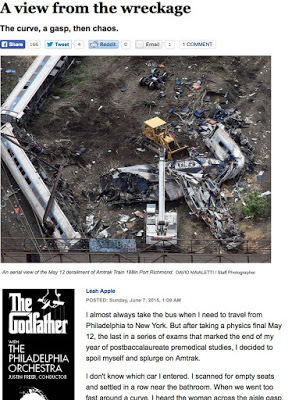 I have written often of my student Leah Apple. Of her work in my memoir class. Of her hip-hop kids of West Philadelphia. Of the evening she came for dinner and taught me all about dance and language in a far-away place called Kinmen.
I have written often of my student Leah Apple. Of her work in my memoir class. Of her hip-hop kids of West Philadelphia. Of the evening she came for dinner and taught me all about dance and language in a far-away place called Kinmen.But this weekend, dear Leah has spoken for herself about the terror she endured as a passenger of the ill-fated May 12 Amtrak train. She speaks of chaos. Of live wires. Of a police car and a surge of hospital guests. She speaks of seeking order.
Please read her words here. Her first published words about something that cannot happen again.
I am so, so glad you are here among us, Leah.




Published on June 08, 2015 05:28
June 5, 2015
This Is the Story of You: on page proofs and distance
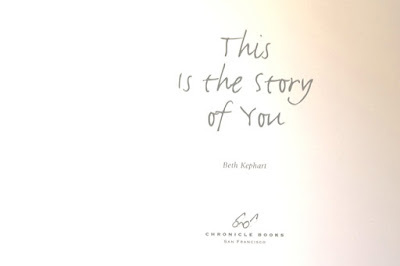 It has been a week of many words. A read and review of a very favorite author for the Chicago Tribune. The final page proofing of
Love: A Philadelphia Affair,
due out in September. The new afterword for the fourth edition of
Handling the Truth
. Revisions of the talk about home (what we learn about it in the novels we read) for the Moravian Writers' Conference, to be held this very weekend. And then, yesterday, this: the arrival of the proof pages for This Is the Story of You, a mystery set in the aftermath of a Jersey-style storm, due out from Chronicle next spring.
It has been a week of many words. A read and review of a very favorite author for the Chicago Tribune. The final page proofing of
Love: A Philadelphia Affair,
due out in September. The new afterword for the fourth edition of
Handling the Truth
. Revisions of the talk about home (what we learn about it in the novels we read) for the Moravian Writers' Conference, to be held this very weekend. And then, yesterday, this: the arrival of the proof pages for This Is the Story of You, a mystery set in the aftermath of a Jersey-style storm, due out from Chronicle next spring.I'm going to leave this particular work until next week—unsure of my ability to read the story right just now. But what I want to say in this moment is this: time is our biggest ally in this writing life. The distance the process—from writing to redrafting to editing to copy editing to proof page reading—gives us from our own work. I needed months between the copy editing of Love and the proofing to see what problems still existed. I needed two years since the publication of Handling to know what else I had to say about memoir (and to be able to say it all in 1,000 words). I needed three weeks to re-read many beloved novels to know what I think about literary home, and then another week of writing and revisions to get the talk in order.
As I have needed time away from Story, which was written more than a year ago, to know if I've written as purely and truly and meaningfully as I could. I won't know, precisely, what is in those pages until I sit with them again. The mystery is a mystery to me. I have one last chance to figure out if it works.




Published on June 05, 2015 03:37
June 4, 2015
"Photographs supplant and corrupt the past." — Sally Mann, HOLD STILL

As far back as 1901 Emile Zola telegraphed the threat of this relatively new medium, remarking that you cannot claim to have really seen something until you have photographed it. What Zola perhaps also knew or intuited was that once photographed, whatever you had "really seen" would never be seen by the eye of memory again. It would forever be cut from the continuum of being, a mere sliver, a slight, translucent paring from the fat life of time; elegiac, one-dimensional, immediately assuming the amber quality of nostalgia: an instantaneous memento mori. Photography would seem to preserve our past and make it invulnerable to the distortions of repeated memorial superimpositions, but I think that is a fallacy: photographs supplant and corrupt the past, all the while creating their own memories.
Sally Mann, Hold Still




Published on June 04, 2015 04:22
June 3, 2015
in celebration of differently abled, in Krakow
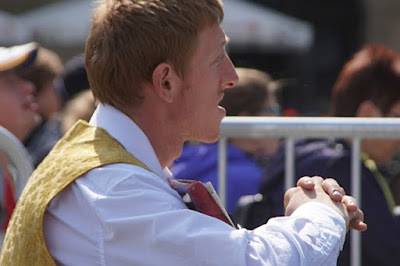
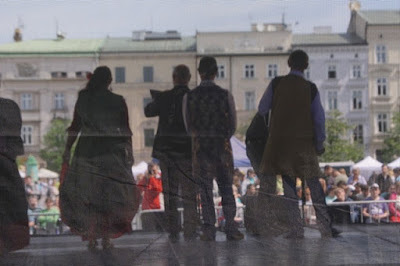
Among the many stories I want to tell about Krakow is the story of that one solitary day in which the sun shone on the main square (Ryneck Glowny), the largest public square in Europe. It is the sort of place where universities showcase their academic wares, kielbasa is fried to perfection, lace makers make their lace, president-elects stump on the eve of their election, crepes ooze with fresh strawberries, trumpeters announce the hour, politicians march, actors perform, bubble blowers blow, and chamber orchestra musicians slip inside the side door of a small historic church to play (we followed them in; we listened).
But on this particular rare sunny day, Ryneck Glowny was bedazzled by the differently abled. They came from far and wide—in wheelchairs, with teachers, with parents. They massed before their own craft huts, dressed in local colors, and performed upon their stage, telling the story of the Krakow dragon and singing traditional songs.
It was exquisite. To sit there among them, to congratulate them on their art, to see this Polish city embrace their shining talents.
The sun had come. So had they.




Published on June 03, 2015 04:48



